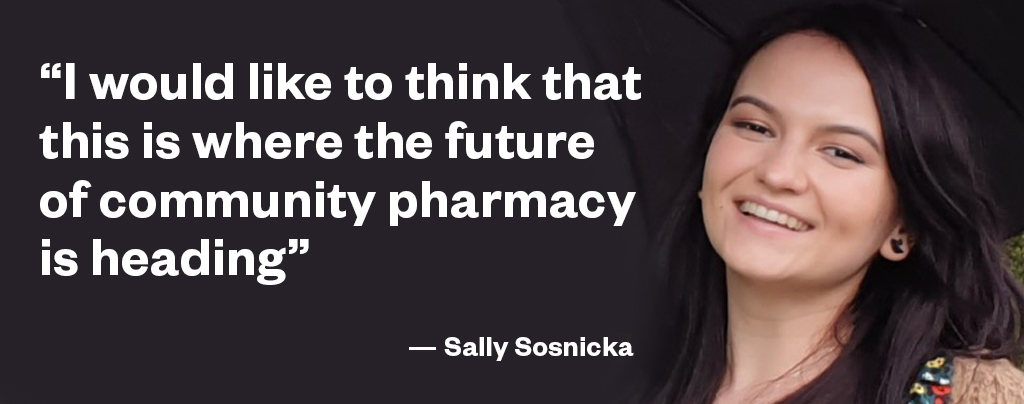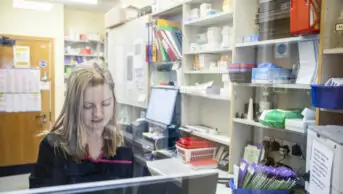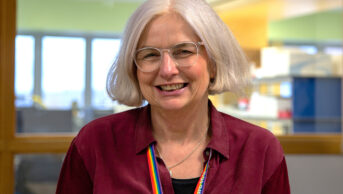
Mclean / Shutterstock.com
It has been almost two years since that much anticipated email from Oriel landed in my inbox and I was offered my preregistration training at Woolpit Health Centre as a community/GP split placement.
It was a welcome relief as I had not performed as I had hoped in the Oriel multiple mini interviews and situational judgement tests. I wasn’t sure what to expect but, looking back at my experience, I am really happy and grateful with how things have turned out.
Woolpit Health Centre is located in Woolpit — a Suffolk village that has a population of almost 2,000 and, according to Wikipedia, is “notable for the 12th-century legend of the green children of Woolpit”. With such a small population, it must be a pretty dull place to work in, right? Not at all.
The surgery serves approximately 14,000 patients and, owing to its rural location, it is not just a GP surgery but a dispensing practice. This means that a dispensing doctor can dispense the patient’s medication if they live too far from a community pharmacy.
What makes Woolpit Health Centre even more atypical is that it also has a ‘normal’ pharmacy, making it a dispensary/pharmacy hybrid model. I never expected a rural pharmacy to be particularly busy, but with approximately 1,000 items being dispensed each day, there are always opportunities to learn.
As with many MPharm students, community pharmacy was not sold well to me — I was concerned that it would be monotonous and not very clinical. In comparison, the world of hospital pharmacy was always glamourised and it appeared that if you were not striving to do your preregistration year at a hospital, then you were not being ambitious enough. I was not completely sure about which sector I wanted to go into and, ideally, I would love to have tried all three.
My preregistration training provider was not your standard pharmacy — as it was part of the surgery, we had access to all the patient records just as GPs do. This meant that we knew exactly what medications a patient was taking, their conditions and their recent consultations with various healthcare professionals.

This allows the pharmacist to better understand the needs of a patient and build a better rapport. I often had to remind myself that this was not the norm in many places and, equally, question why it is not. Having this access meant that the pharmacists could provide better quality, more holistic care for patients. Even when we faced trivial problems such as stock issues or minor prescribing errors, we did not need to call a surgery and try to get through to the GP to issue a new script. Instead, the pharmacists simply issued an alternative and made the prescriber aware. I would like to think that this is where the future of community pharmacy is heading, and I feel privileged to have been a part of such a progressive model.
Working in this unusual environment as the only preregistration trainee was rather challenging. I often found myself worrying about how much I didn’t know and then had to take a step back and remind myself that I — a preregistration student that had recently graduated — was comparing myself to pharmacists, doctors and nurses who have been qualified for many years.
I feel very lucky to have trained in this multidisciplinary environment. It’s one of the aspects of hospital pharmacy that I’m sure many are attracted to, except it’s on a smaller scale, making it much easier to get to know everyone and ask questions you would otherwise be too shy to ask.
Each day was like no other. Some days I would dispense, serve patients and complete the controlled drugs register. Other days, I would process clinic letters, deal with tasks from the doctors and help with medication queries from patients. As my confidence and experience grew, I started dealing with minor ailments, and carried out medication reviews as well as long-term conditions reviews.
One of the most memorable consultations I had was with an older patient whose asthma medication I reviewed. This patient would request two salbutamol inhalers each month. When I asked how they use their inhalers, they told me they used the reliever three to four times per day and the preventer when they had a cold. Even though they had had asthma most of their life, it was never explained to them how asthma is treated and how the different inhalers work.
The patient was grateful for my explanation and agreed to use their preventer regularly. Being able to use my pharmaceutical knowledge to help someone and potentially improve their condition is an incredibly rewarding feeling and I am so fortunate to have been able to experience it at an early stage of my career.
My preregistration training was all-encompassing and could not have prepared me better for life as a newly qualified pharmacist. It made me fall in love with primary care and I am immensely grateful to be a part of this sector. I am now employed by Suffolk Primary Care as a clinical pharmacist for the East Suffolk Primary Care Network.
To all the final year students out there looking forward to their foundation training: wherever you end up, enjoy it and make the most of it. I found the Oriel process extremely stressful and yet, if it wasn’t for that, I would never have found the hidden gem that was my preregistration training placement.
Sally Sosnicka is clinical pharmacist for the East Suffolk Primary Care Network


